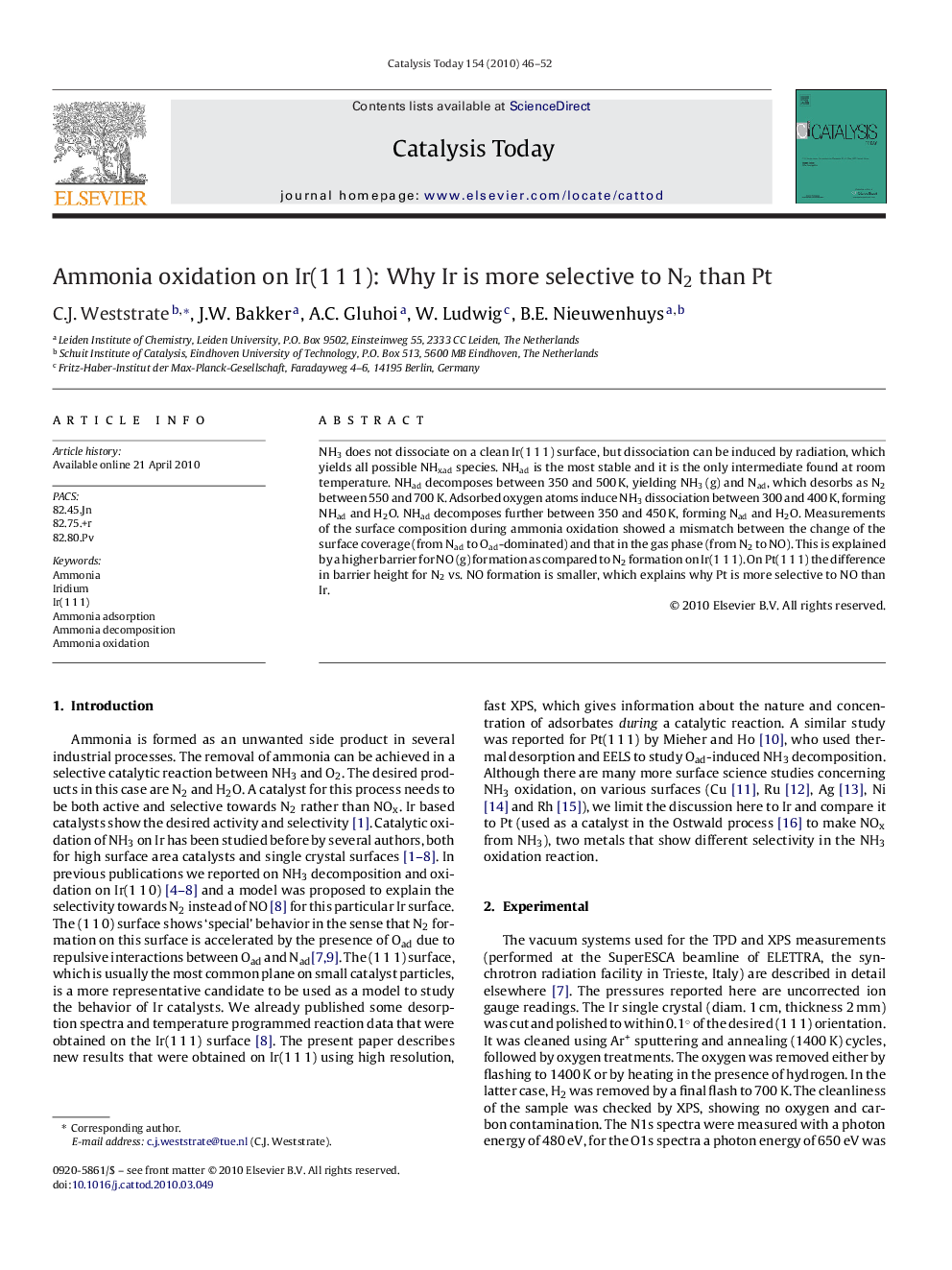| کد مقاله | کد نشریه | سال انتشار | مقاله انگلیسی | نسخه تمام متن |
|---|---|---|---|---|
| 56672 | 47091 | 2010 | 7 صفحه PDF | دانلود رایگان |

NH3 does not dissociate on a clean Ir(1 1 1) surface, but dissociation can be induced by radiation, which yields all possible NHxad species. NHad is the most stable and it is the only intermediate found at room temperature. NHad decomposes between 350 and 500 K, yielding NH3 (g) and Nad, which desorbs as N2 between 550 and 700 K. Adsorbed oxygen atoms induce NH3 dissociation between 300 and 400 K, forming NHad and H2O. NHad decomposes further between 350 and 450 K, forming Nad and H2O. Measurements of the surface composition during ammonia oxidation showed a mismatch between the change of the surface coverage (from Nad to Oad-dominated) and that in the gas phase (from N2 to NO). This is explained by a higher barrier for NO (g) formation as compared to N2 formation on Ir(1 1 1). On Pt(1 1 1) the difference in barrier height for N2 vs. NO formation is smaller, which explains why Pt is more selective to NO than Ir.
Journal: Catalysis Today - Volume 154, Issues 1–2, 1 September 2010, Pages 46–52